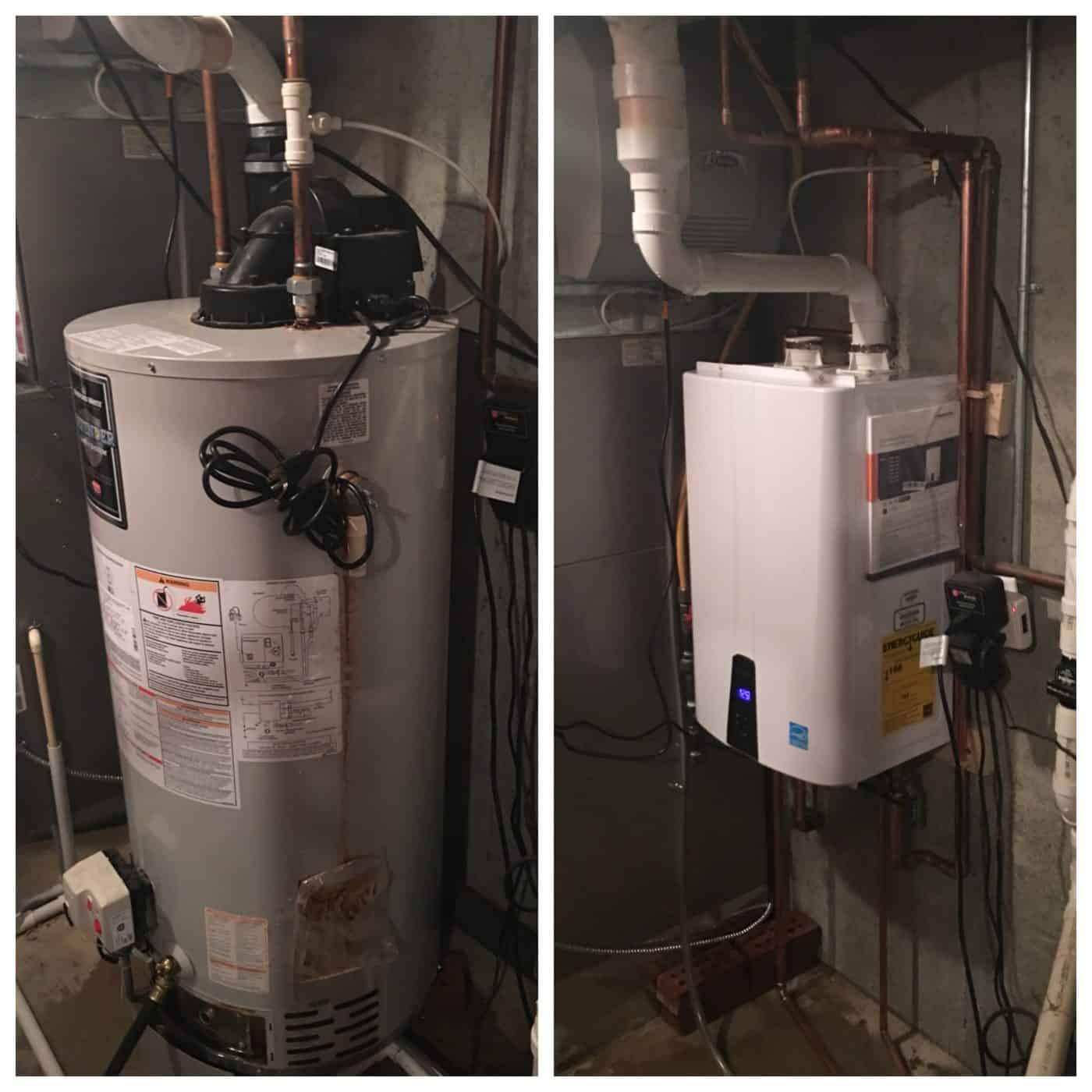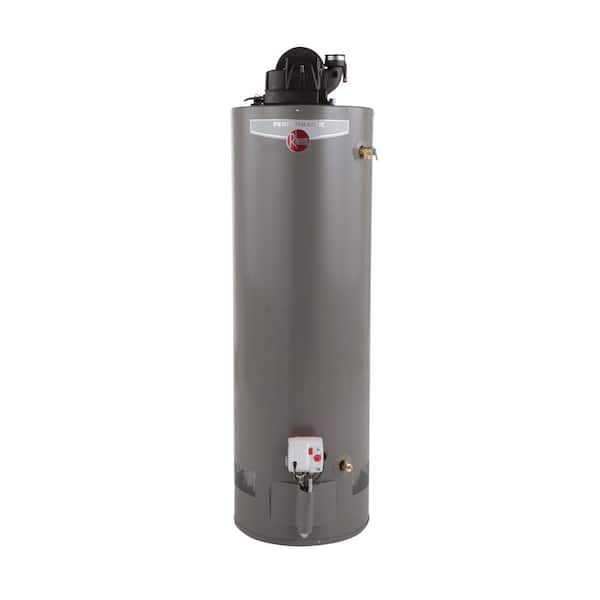If your power vent water heater keeps shutting off, troubleshoot the thermocouple for damage, dirt, or bending. Inspect and replace if necessary.
Clean if dirty. Additionally, check for clogs in the vent or exhaust line and ensure the pressure switch hose is not kinked.
Understanding Common Issues
If your Rheem power vent water heater keeps shutting off, it could be due to a damaged or dirty thermocouple. Inspect the thermocouple and clean or replace it if necessary. Additionally, check for clogs in the vent or exhaust line.
Symptoms Of Malfunctioning Rheem Power Vent
If you are experiencing issues with your Rheem Power Vent water heater, it’s essential to understand the symptoms of a malfunctioning unit. Here are some common signs to look out for:- Intermittent hot water
- Fluctuating water temperature
- Low water pressure
- Strange noises coming from the unit
- Water leaks
- Pilot light keeps going out
- Gas smell
- Excessive condensation
Impact On Water Temperature And Flow
When your Rheem Power Vent water heater is malfunctioning, it can significantly impact your daily life by affecting the water temperature and flow. Here’s how:- Hot water problems: A malfunctioning unit might produce intermittent or lukewarm water, making it difficult to enjoy a relaxing and comfortable shower or bath.
- Fluctuating water temperature: Inconsistent water temperature can be annoying, especially when you’re in the middle of washing dishes or taking a shower.
- Low water pressure: A malfunctioning unit can lead to reduced water pressure, affecting the efficiency of your faucets and showerheads.
- Noises and leaks: Strange noises and water leaks can indicate underlying problems, which can further impact the water temperature and flow.
- Pilot light issues: If the pilot light keeps going out, it can prevent the water heater from functioning properly, resulting in inconsistent hot water supply.
- Gas smell: A gas smell can be a dangerous sign, indicating a potential gas leak, which requires immediate attention to ensure safety.
- Excessive condensation: Excessive condensation around the unit can be a symptom of a malfunction, indicating problems with the venting system or insulation.
Expert Tips For Diagnostic Steps
When it comes to troubleshooting a Rheem Power Vent Water Heater, having expert tips for diagnostic steps can save you time and money. By following these steps, you can quickly identify and address any issues that may be affecting the performance of your water heater. Here are some expert tips to help you troubleshoot your Rheem Power Vent Water Heater.
Safety Precautions Before Starting
Before you begin troubleshooting your Rheem Power Vent Water Heater, it’s important to take some safety precautions. These precautions will help ensure your safety and the safety of those around you. Here are some safety precautions to keep in mind:
- Turn off power to the water heater at the circuit breaker.
- Close the gas supply valve to the water heater.
- Allow the water heater to cool down before attempting any troubleshooting.
- Wear protective clothing, gloves, and eye protection.
Tools Needed For Rheem Troubleshooting
Before you start troubleshooting your Rheem Power Vent Water Heater, it’s important to have the right tools on hand. Having the right tools will make the process much easier and more efficient. Here are the tools you’ll need for Rheem troubleshooting:
- Multi-meter to measure electrical continuity and voltage.
- Insulated screwdriver for electrical connections.
- Adjustable wrench for gas connections.
- Flashlight for better visibility in tight spaces.
Assessing Error Codes And Signals
One of the most effective ways to troubleshoot your Rheem Power Vent Water Heater is by assessing error codes and signals. These codes and signals can provide valuable information about the specific problem your water heater is experiencing. Here’s how you can assess error codes and signals:
- Refer to the owner’s manual for a comprehensive list of error codes and signals.
- Identify the specific error code or signal displayed on the water heater.
- Refer to the manual to determine the cause of the error code or signal.
- Take appropriate action based on the manual’s instructions to resolve the issue.
By assessing error codes and signals, you can quickly identify and resolve any problems with your Rheem Power Vent Water Heater.
Clearing Blockages For Proper Ventilation
If you’re experiencing blockages that hinder proper ventilation in your Rheem power vent water heater, it could lead to frequent shutdowns. Inspect and clean the thermocouple to ensure it’s not damaged, dirty, or bent, and check for any clogs in the vent or exhaust line.
Identifying Vent Obstruction Signs
Having proper ventilation is crucial for the efficient operation of your Rheem Power Vent water heater. However, over time, the vents may become blocked or obstructed, causing issues like inadequate airflow, improper combustion, and even system shutdowns.
When it comes to identifying vent obstruction signs, here are a few things you should look out for:
- Blocked or discolored vent caps.
- Strange odors coming from the vents.
- Excessive condensation or moisture around the venting system.
- Unusual sounds, such as whistling or rattling noises.
- Visible signs of debris or animals near the vents.
Step-by-step Process To Clear The Vents
Here’s a step-by-step guide on how to clear the vents of your Rheem Power Vent water heater:
- Turn off the power. Before you begin any troubleshooting or maintenance, make sure to turn off the power supply to the water heater. This will help prevent any accidents or injuries.
- Inspect the venting system. Carefully examine the venting system, including the vent pipes, connectors, and termination cap. Look for any signs of blockages, such as debris, dust, or animal nests.
- Remove the obstructions. If you find any blockages, use a soft brush or cloth to remove them. Make sure to be gentle and not damage the venting system during this process.
- Check for proper installation. Ensure that the vent pipes are properly secured and aligned. Any loose connections or gaps can lead to blocked vents or improper ventilation.
- Inspect the vent termination cap. Look for any signs of damage or wear on the vent termination cap. If necessary, replace it to ensure proper ventilation.
- Clean the venting system. After clearing the blockages and ensuring proper installation, clean the venting system thoroughly. Use a vacuum cleaner or compressed air to remove any remaining debris.
- Turn on the power and test. Once you’ve completed the above steps, turn on the power supply to the water heater and test for proper operation. Monitor the venting system for any signs of issues or obstructions.
By following these steps, you can effectively clear any blockages in the vents of your Rheem Power Vent water heater, ensuring proper ventilation and optimal performance.
Optimizing The Thermostat Settings
When troubleshooting a Rheem Power Vent Water Heater, optimizing the thermostat settings is essential. By properly adjusting the thermostat, you can ensure optimal performance and prevent issues such as the heater repeatedly shutting off. Inspecting and cleaning the thermocouple and ensuring proper air supply are also important steps in troubleshooting.
Evaluating Temperature Consistency
When it comes to troubleshooting your Rheem Power Vent Water Heater, temperature consistency is an important factor to consider. If you notice that the temperature of your hot water fluctuates drastically or is not consistent, it could be due to several reasons. One possible cause is a faulty thermostat setting. Evaluating the temperature consistency is the first step towards optimizing the thermostat settings and ensuring reliable performance of your water heater.
Adjusting The Thermostat For Optimal Performance
To optimize the thermostat settings of your Rheem Power Vent Water Heater, you need to adjust it for optimal performance. Here are a few steps to follow:
- Locate the thermostat on your water heater. It is usually located on the front or side of the unit.
- Use a screwdriver to remove the thermostat cover.
- Take note of the current temperature setting and compare it to the desired temperature. The recommended temperature for most households is around 120°F (49°C).
- If the current setting is too high or too low, use the screwdriver to adjust the thermostat dial accordingly. Turn it clockwise to increase the temperature and counterclockwise to decrease it.
- Make small adjustments and wait for a few hours to evaluate the temperature consistency before making further changes.
- Monitor the temperature of your hot water over a few days and make additional adjustments if necessary.
By adjusting the thermostat for optimal performance, you can ensure that the hot water from your Rheem Power Vent Water Heater is consistently at the desired temperature. This not only improves your comfort but also helps in saving energy and reducing utility bills.
Rheem Power Vent Electronic Fixes
When it comes to troubleshooting a Rheem Power Vent Water Heater, electronic fixes are an important aspect to consider. Issues with power supply, electronic controls, and sensors can cause the water heater to malfunction. In this section, we will tackle these issues step by step to help you identify and resolve the problem.
Tackling Issues With Power Supply
If your Rheem Power Vent Water Heater is not turning on or experiencing intermittent power loss, it’s crucial to start your troubleshooting process by examining the power supply. Here are a few steps you can take to ensure the power supply is not the culprit:
- Check the electrical connections: Inspect the power cord and ensure it is securely connected to both the heater and the power outlet.
- Circuit breaker and fuses: Verify that the circuit breaker for the water heater is not tripped and that the fuses are intact.
- Testing the outlet: Use a voltage tester to check if the power outlet is functioning properly.
- Power switch: Make sure the power switch on the water heater is in the “on” position.
Troubleshooting Electronic Controls And Sensors
Electronic controls and sensors play a vital role in the proper functioning of your Rheem Power Vent Water Heater. If you are experiencing issues related to these components, here are some troubleshooting steps you can take:
Electronic controls
- Check the control panel: Ensure that all buttons and settings on the control panel are functioning correctly.
- Resetting the control panel: If you encounter any error codes or unusual behavior, try resetting the control panel by turning off the power and turning it back on after a few minutes.
Sensors
- Flammable vapor sensor: Inspect the flammable vapor sensor for any dirt, debris, or damage. Clean or replace it if necessary.
- Temperature sensor: Test the temperature sensor to ensure it is providing accurate readings. Replace if faulty.
- Exhaust temperature sensor: Check the exhaust temperature sensor for any signs of malfunction. Replace if needed.
- Gas valve solenoid coil: Troubleshoot the gas valve solenoid coil by testing its continuity. Replace if defective.
- Thermocouple: Examine the thermocouple for dirt, damage, or bending. Clean or replace if necessary.
By following these steps, you can effectively troubleshoot and resolve electronic issues with your Rheem Power Vent Water Heater. Remember to always refer to the manufacturer’s manual or consult a professional if you are unsure or unable to fix the problem yourself.

Credit: www.cartersmyplumber.com
Frequently Asked Questions On Rheem Power Vent Water Heater Troubleshooting
Why Does My Power Vent Water Heater Keep Shutting Off?
If your power vent water heater keeps shutting off, it could be due to a damaged, dirty, or bent thermocouple. Check the thermocouple for any damage and replace if necessary. If it’s dirty, allow it to cool down and clean it.
How Do You Reset A Rheem Electric Water Heater?
To reset a Rheem electric water heater, follow these steps: 1. Turn off the power supply to the water heater. 2. Locate the reset button on the thermostat panel. 3. Press and hold the reset button for about 5 seconds. 4.
Release the reset button. 5. Turn the power supply back on. Note: If the heater continues to trip the reset button, it may indicate a larger issue and professional assistance may be needed.
Why Does My Rheem Water Heater Keep Shutting Off?
If your Rheem water heater keeps shutting off, it may be due to a damaged, dirty, or bent thermocouple. Check the thermocouple and replace it if necessary. Cleaning a dirty thermocouple may also solve the issue. Clogs in the vent or exhaust line can also cause shutdowns, so check for obstructions and clear them if needed.
Why Is My Direct Vent Water Heater Not Staying Lit?
A direct vent water heater may not stay lit due to improper venting or limited air supply. Ensure the vent and exhaust lines are clear of obstructions and check for any kinks in the pressure switch hose. If the pilot light still goes out, inspect the thermocouple for damage, dirt, or bending.
Clean or replace the thermocouple as necessary.
Conclusion
If you’ve been experiencing issues with your Rheem Power Vent Water Heater, don’t panic. Troubleshooting common problems can help you get it back up and running in no time. From inspecting and cleaning the thermocouple to ensuring proper venting and air supply, there are various steps you can take to address the issue.
Remember, regular maintenance and checking for any obstructions are essential for the smooth functioning of your water heater. By following these troubleshooting tips, you can ensure that your Rheem Power Vent Water Heater operates efficiently and reliably.

I am a Water Heater specialist writer and blogger based in the USA & UK. I have been working with Water Heater for six long years. And I give trips on various Water Heater problems and solutions. I have a lot of experience with Water Heater And I share them here

